

Monday, December 2, 3:30pm - 4:30pm, WEL 2.122
University of Utah
PhD Cambridge, 2017 (Goodman)
Our program unites various modern and classical tools for the design of catalysts for new reactions with broad applications from enantioselective synthesis to energy related topics (fuel cells and batteries) to biological inspired reaction types (C–H functionalization, directed evolution). Our goals are not only to enable the development of processes with the wide-ranging applications described above but ultimately to understand the guiding principles by which the performance of a particular catalyst or functional molecule is achieved. To accomplish this, we have been integrating classical techniques of physical organic chemistry with a new set of methods to interrogate the complex relationship of structure to function.
h-index: 7 Total Articles: 13 Total Citations: 175 (Web of Science, Nov. 2019)
Organic and A&P Seminar
Friday, November 22, 3:30-4:30pm, WEL 2.122
Associate Professor, Molecular Medicine
Scripps Research Institute
The research in the Wu laboratory integrates synthetic chemistry with glycobiology to explore the relevance of protein glycosylation in human disease and host-symbiont interactions. The major goal of the laboratory is to develop chemical biology platforms to image and characterize the glycome in tumors and in the immune system. The laboratory is also interested in chemical tools that enable selectively enrichment of glycoproteins in leukocytes for their molecular identification and functional studies. These new tools will facilitate the discovery of new biomarkers for human disease, and assist in the development of clinical diagnostics and therapeutics.
Publications (Google Scholar Citations)
h-index: 16 Total Articles: 32 Total Citations: 1220 (Web of Science, Oct. 2019) [Likely an undercount due to name ambiguity]
h-index: 32 Total Citations: 6311 (Google Scholar Citations, Oct. 2019)
Monday, November 18, 3:30pm - 4:30pm, WEL 2.122
Stanford University
PhD Harvard, 2016 (Jacobsen)
Stanford Profile | Bertozzi Group
The Bertozzi Group studies cell surface interactions that contribute to human health and disease with specific projects in the areas of cancer, inflammation and bacterial infection. We use the techniques of organic synthesis, genetics, and biochemistry as tools to study and manipulate complex cellular processes. Much of our research involves cell surface oligosaccharides, biopolymers that contribute to cell surface recognition and cell-cell communication.
Publicatons (Google Scholar Citations)
h-index: 10 Total Articles: 12 Total Citations: 632 (Web of Science, Oct. 2019)
h-index: 10 Total Citations: 768 (Google Scholar Citations, Oct. 2019)
Friday, November 15, 3:30-4:30pm, WEL 2.122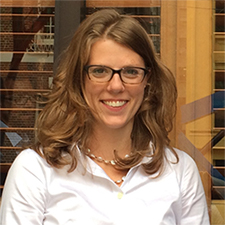
Associate Professor
Texas A&M University
The Pentzer Group uses organic chemistry to tailor the properties and assembly behavior of small molecules, polymers, and nanoparticles to access new materials and assemblies as a route to understand structure-property relationships. While a current goal is to access electronic properties not possible with current state-of-the-art systems, the fundamental understandings gained have broad implications. Researchers in the Pentzer lab are trained in synthetic organic and materials chemistry; characterization of small molecules, polymers, and assemblies; and data analysis and evaluation. Collaborations with scientists and engineers present opportunities to augment this work, allowing ideas to be taken from design to implementation to application. Current work focus on the preparation of 2D Janus nanosheets, developing new polymer backbone chemistries through chain growth methods, and controlling the properties of small molecules and polymers using stimuli responsive moieties.
Publications (Google Scholar Citations)
h-index: 14 Total Articles: 40 Total Citations: 705 (Web of Science, Oct. 2019)
h-index: 16 Total Citations: 902 (Google Scholar Citations, Oct. 2019)
Friday, November 1, 3:30-5:30pm, WEL 2.122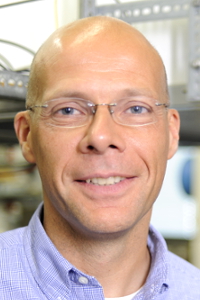
Professor
Friedrich Alexander University, Erlangen-Nürnberg
Our current research activities include the application of an arsenal of spectroscopic and microscopic techniques to a variety of molecular systems designed specifically to explore the nature of the chemical, physical and photophysical properties of new molecular hybrids, quantum dots, quantum rods and nanoparticles. Our experimental tools span from ultrafast spectroscopy (absorption and fluorescence) and vibrational spectroscopy (Raman and IR) to electrochemistry and microscopy (Raman, TEM and AFM). Such conception is extremely valuable for the realization of solar energy conversion, photovoltaics, and catalytic reactivity, specifically to novel chemical and light driven systems.
h-index: 94 Total Articles: 660 Total Citations: 36,342 (Web of Science, Oct. 2019)
Friday, November 1, 3:30-5:30pm, WEL 2.122
Associate Professor
University of Arizona
PhD, UT Austin 2007 (Sessler)
Redox processes and coordination complexes are fundamental components of countless biological phenomena such as DNA biosynthesis, respiration and electron transfer processes, photosynthesis, transmembrane ion gating, protein folding, and many others. We study the chemistry of transition metal ions and other redox-active species in order to understand their involvement in human health and disease. In addition, we are inspired by bioinorganic chemistry for the design of novel metal complexes active in redox catalysis.
Publications (Google Scholar Citations)
h-index: 18 Total Articles: 40 Total Citations: 1244 (Web of Science, Oct. 2019)
h-index: 17 Total Citations: 1322 (Google Scholar Citations, Oct. 2019)
Monday, October 28, 3:30-4:30pm, WEL 2.122
Assistant Professor
New York University
Abstract: Nickel catalysts exhibit unique properties. Open-shell configurations are relatively stable and readily accessible, which lead radical pathways. Moreover, the reduction potential of Ni is considerably lower than that of Pd. This reactivity is employed to functionalize alkenes. Enantioselective 1,2-dicarbofunctionalization of alkenes accesses molecules with intricate substitution patterns while introducing stereocenters. This method is readily applicable to prepare molecules with important bioactivity, such as a,a,b-triarylated ethane scaffolds. The use of reducing conditions with alkyl and aryl halides as the coupling partners avoids stoichiometric organometallic reagents and tolerates a broad range of functional groups. Mechanistic studies reveal that the use of Ni catalysts initiates radical formation and leads to unconventional enantio-determining steps. A two-electron redox pathway on a Ni(I)/Ni(III) platform achieves trans-selective diene coupling to afford important cyclic structures.
h-index: 16 Total Articles: 25 Total Citations: 1189 (Web of Science, Sep 2019)
Wednesday, October 23, 3:30-4:30pm, WEL 2.122
John G. Kirkwood and Arthur A. Noyes Professor
Caltech
In the Barton group, we examine the chemical and physical properties of DNA and the biological implications of those properties. Our research has shown that DNA is more than just the library of the cell, existing only to hold genetic information; on the contrary, DNA is a molecule rich in complexity and full of surprises. Previously, the Barton group has shown that the overlapping π system of stacked DNA bases can mediate the transfer of electrical charge (electrons and holes) over long distances. This DNA-mediated charge transfer (DNA CT) occurs in a variety of sequence contexts and between various types of charge donors and acceptors, shows a shallow distance dependence, and is exquisitely sensitive to perturbations to the base stack such as chemical damage and base pair mismatches. Our current research is focused in three areas:
h-index: 91 Total Articles: 316 Total Citations: 36,191 (Web of Science, Sep. 2019)
Friday, Sept. 27, 3:30-4:30pm, WEL 2.122
Barry L. MacLean Professor for Molecular Engineering Innovation and Enterprise
University of Chicago
ABSTRACT: The dynamic bond can be defined as any class of bond that selectively undergoes reversible breaking and reformation, usually under equilibrium conditions. We have been investigating the incorporation of dynamic bonds (which can be either covalent or non-covalent) in to polymeric materials to access new classes of stimuli-responsive materials and polymer architectures. Dynamic bond-containing polymers are structurally dynamic and as such can exhibit macroscopic responses upon exposure to an environmental stimulus, on account of a rearrangement of the polymeric architecture. In such systems, the nature of the dynamic bond not only dictates which stimulus the material will be responsive to but also plays a role in the response itself. Thus, such a design concept represents a molecular level approach to the development of new stimuli-responsive/adaptive materials. We have been interested in the potential of such systems to access new material platforms and have developed a range of new mechanically stable, structurally dynamic polymer and nanocomposite films that change their properties in response to a given stimulus, such as temperature, light or specific chemicals. We have also been interested in using such polymers as templates to access mechanically interlocked polymers (MIPs), such as polyrotaxanes and polycatenanes, which offer the potential to access functional soft materials with intriguing new properties. In addition, as the macromolecular version of mechanically interlocked molecules (MIMs), MIPs are intriguing candidates for the creation of sophisticated molecular machines and smart soft materials.
Publications (Google Scholar Citations)
h-index: 56 Total Articles: 134 Total Citations: 14,381 (Web of Science, Aug. 2019)
h-index: 62 Total Citations: 19,612 (Google Scholar Citations, Aug. 2019)
Friday, Sept. 13, 3:30-4:30pm, WEL 2.122
Assistant Professor
University of Minnesota
We aim to invent transformative synthetic methods to reduce chemical waste generation, while simultaneously redefining how chemists approach making medicines. Today, synthesizing certain medicines generates >1,000 kilograms of chemical waste for each kilogram of drug. An increasing global demand, combined with a decreasing supply of resources, necessitates more sustainable syntheses. Our lab discovers and optimizes innovative synthetic methods to address this 21st century challenge. Superior methods i) prevent unnecessary resource consumption, ii) minimize the generation of chemical waste, and iii) provide access to new chemical space. New chemical space contains molecular diversity with unknown potential. Our current research focuses on i) enhancing chiral amine synthesis, ii) discovering salt-free coupling reactions, and iii) improving access to bromodomain inhibitors. These focus areas address specific longstanding synthetic challenges. Furthermore, our methods provide unique access to untapped chemical space, which we are exploring through collaboration for medicinal chemistry applications.
Publications (Google Scholar Citations)
h-index: 13 Total Articles: 34 Total Citations: 916 (Web of Science, Jul. 2019)
h-index: 15 Total Citations: 1145 (Google Scholar Citations, Jul. 2019)
Friday, August 30, 3:30-4:30pm, WEL 2.122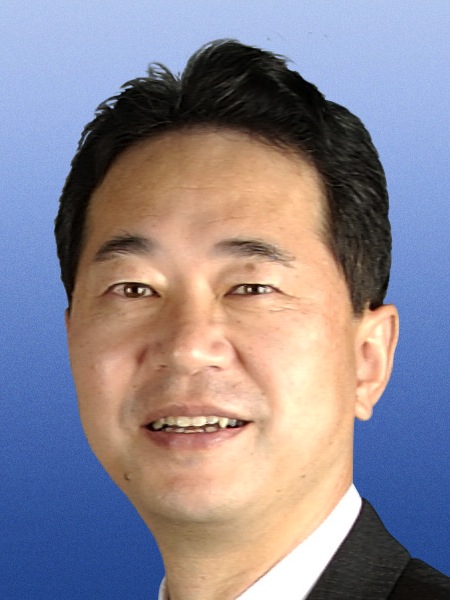
Professor
Kyoto University
Organometallic chemistry is one of the fundamental research area with great potential; Innumerable combinations of elements and bonding modes are possible, and therefore, it still has a lot of room which has been still unexplored. In addition, development of organometalic chemistry enables to synthesize new compounds, which can lead to development of vairous fields including molecular catalysts, functional materials, polymer synthesis, and pharmaceuticals. Our research project is based on organic synthesis, but our goal is "innovative discovery" which would stimulate the related sciences.
Not available due to name ambiguation
Friday, July 19, 1:00-2:00pm, WEL 2.122
Assistant Professor
Duke University
PhD UT Austin 2010
The Hargrove lab harnesses the unique properties of small organic molecules to study the structure, function and therapeutic potential of long noncoding RNAs (lncRNAs). The discovery of these fascinating biomolecules has caused a paradigm shift in molecular biology and speculation as to their role as the master drivers of diseases such as cancer. At the same time very little is known about their structure and function, leading some to call the field a veritable “Wild West.” Small molecules are the perfect tools for such exploration, and the Hargrove lab works at the interface of chemistry and biology, employing methods ranging from RNA-targeted small molecule synthesis and array-based pattern recognition to studies of the molecular and cellular biology of nucleic acids. Collaborations with the Department of Biology as well as colleagues in the School of Medicine ensure that these tools are applied to the most important unsolved problems in the fundamental biology and disease-related actions of long noncoding RNAs.
Publications (Google Scholar Citations)
ORCID: https://orcid.org/0000-0003-1536-6753
h-index: 13 Total Articles: 24 Total Citations: 804 (Web of Science, Jul. 2019)
h-index: 17 Total Citations: 1038 (Google Scholar Citations, Jul. 2019)
Monday, May 20, 3:30-4:30pm, WEL 2.122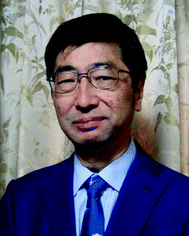
Professor
Shinshu University, Japan
All substances consist of one or several molecules, which can exhibit a versatile range of properties. Two key aspects of chemical research are the synthesis of novel functional molecules and the development of an in-depth understanding of their molecular functionalities. Based on this idea, our research interest focuses on the design and synthesis of new functional molecules based on phthalocyanines and porphyrins as well as the elucidation of the origin of their molecular functionalities based on spectroscopic analyses and theoretical calculations.
h-index: 73 Total Citations: 20,423 (Google Scholar Citations, May. 2019)
Monday, May 6, 3:30-4:30pm, WEL 2.122
Assistant Professor
Iowa State University
Chemists possess an unparalleled understanding of how the complexity of macroscopic matter emerges from the relative simplicity of atoms and molecules; we seek to employ these insights to investigate the widening interface between chemistry, material science and biology. Our research program aims to develop tools to interrogate, understand and manipulate the interactions that occur between (bio)macromolecules. Synthetic chemistry and the development of new methods underpin all aspects of our research, and we apply the principles of chemistry towards the precise molecular-level design and engineering of these systems.
h-index: 11 Total Articles: 23 Total Citations: 359 (Web of Science, Apr. 2019)
h-index: 12 Total Citations: 492 (Google Scholar Citations, Apr. 2019)
Friday, May 3, 3:30-4:30pm, WEL 2.122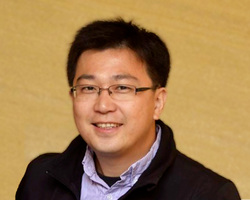
Assistant Professor
University of Pittsburgh
We are developing computational models to quantitatively describe the origins of reactivity and selectivity in organocatalytic and transition metal-catalyzed reactions. We perform quantum mechanical calculations to explore the reaction mechanism, followed by thorough analysis on various stereoelectronic effects to predict how changes of the catalyst structure, substituents, and solvent affect rate and selectivity. We use quantitative energy decomposition methods to dissect the key interactions in the transition state and provide chemically meaningful interpretation to the computed reactivity and selectivity. We apply these computational studies to a broad range of organic and organometallic reactions, such as C–H and C–C bond activations, olefin hydrofunctionalization, olefin metathesis, and polymerization reactions.
h-index: 44 Total Citations: 5067 (Google Scholar Citations, Apr. 2019)
[Web of Science metrics not available due to name ambiguation.]
Wednesday, May 1, 3:30-4:30pm, WEL 2.122
Professor
Northeastern University
The O’Doherty research group has been developing new methods for the de novo synthesis of natural and unnatural structures, with a particular focus on the synthesis of biologically active natural products and carbohydrate motifs. Our overarching synthetic goal is to use asymmetric transition metal catalysis to create absolute stereochemistry and a combination of catalysis and substrate control for diastereocontrol. This concept can be seen in several of our natural product syntheses as well as our expanding ability to synthesize carbohydrates. For example our early efforts to control all the stereochemistry of monosaccharides led to using catalysis to control the stereochemistry of the glycosidic bond and ultimately complex oligosaccharides. A long-term theme to this research is the development of highly stereoselective transformation that can be used for not only synthesis but also to enable medicinal chemistry studies. In fact, we have already had great success along these lines
h-index: 37 Total Articles: 118 Total Citations: 3542 (Web of Science, Apr. 2019)
h-index: 46 Total Citations: 5402 (Google Scholar Citations, Apr. 2019)
Tuesday, April 30, 1:30-2:30pm, NHB 1.720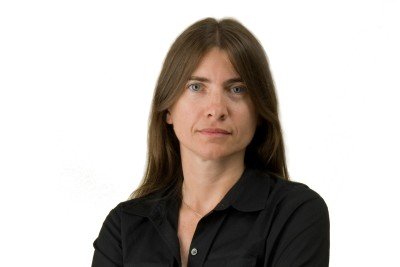
Sloan Kettering Institute
Gabriela Chiosis’ lab uses a unique chemical biology approach to understand, diagnose, and treat cellular processes associated with chronic molecular stress, with the ultimate goal of developing novel therapeutic options for use in the clinic.
Publications (Google Scholar Citations)
h-index: 47 Total Articles: 132 Total Citations: 7634 (Web of Science, Apr. 2019)
h-index: 54 Total Citations: 11,158 (Google Scholar Citations, Apr. 2019)
Friday, April 19, 3:30-4:30pm, WEL 2.122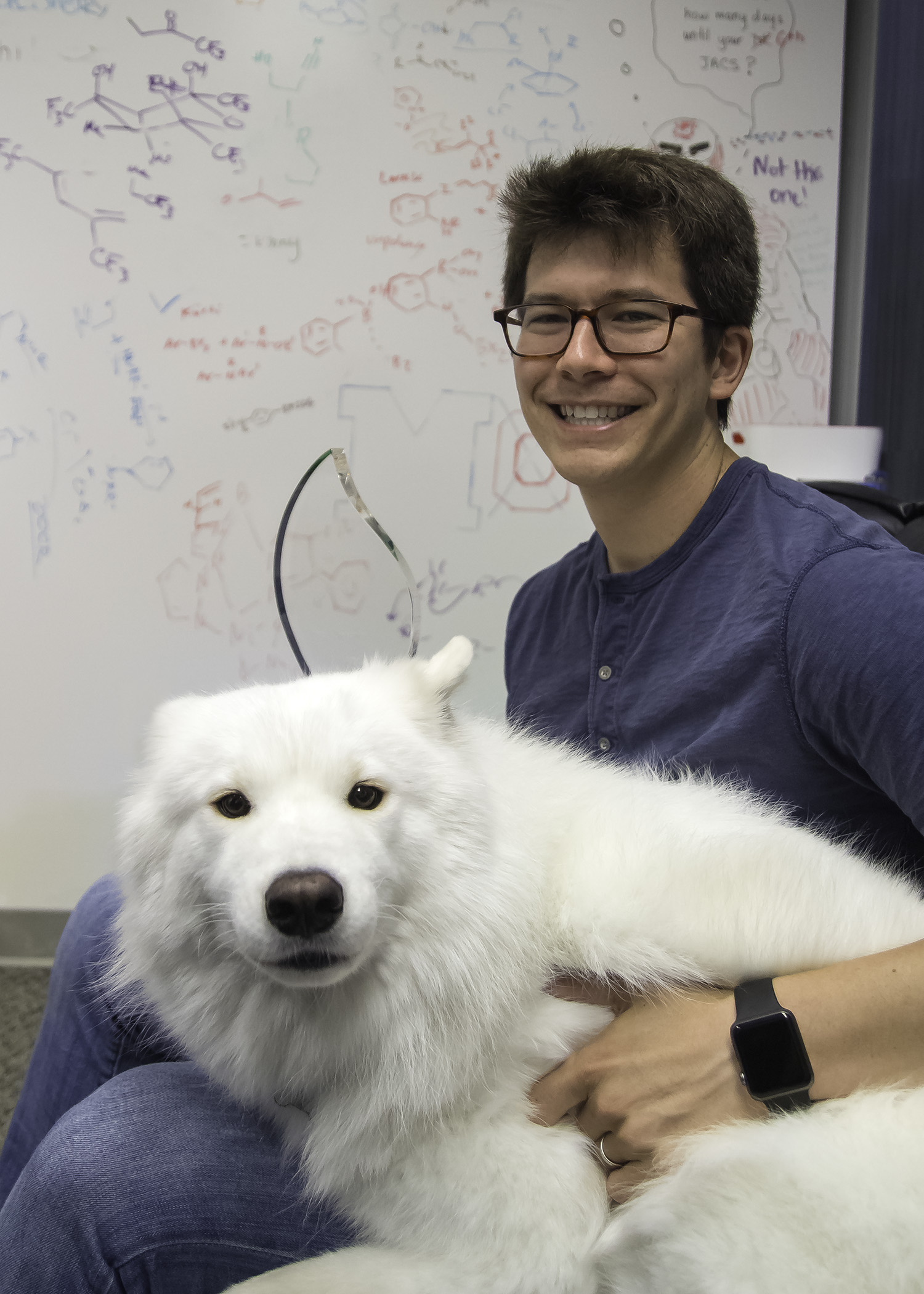
Assistant Professor
Scripps Research Institute
Organic small molecules make up the vast majority of medicines, biological probes, agrochemicals, and materials building blocks. Thus, though they are ubiquitous in modern society, many classes of small molecules remain problematic to prepare using conventional methods. Contemporary synthetic routes routinely require multiple steps, generate large quantities of waste, or require substantial human energy to troubleshoot. Research in the Engle group focuses on addressing these challenges by harnessing the power of catalysis. Our group’s goal is to advance the efficiency, effectiveness, and sustainability of chemical synthesis. The projects that we tackle are highly interdisciplinary, and as a consequence, students complement their core training in synthetic organic, physical organic, and organometallic chemistry with expertise in related disciplines in and outside of chemistry.
Publications (Google Scholar Citations)
![]() ORCID: https://orcid.org/0000-0003-2767-6556
ORCID: https://orcid.org/0000-0003-2767-6556
h-index: 29 Total Articles: 59 Total Citations: 9757 (Web of Science, Apr. 2019)
h-index: 30 Total Citations: 10,806 (Google Scholar Citations, Apr. 2019)
Wednesday, April 17, 3:30-4:30pm, WEL 2.122
Assistant Professor
Duke University
The discovery of catalysts is of great importance to the practice of modern synthetic chemistry, both to improve upon the existing catalog of chemical transformations and to generate new modes of reactivity. Research in the Malcolmson lab focuses on the discovery of novel methods for the efficient and selective synthesis of small molecule scaffolds through the design and development of new catalysts. In these transformations, we seek to realize new synthetic bond disconnections while also controlling some aspect of selectivity (e.g., enantio-, and/or site selectivity). The catalysts and methods developed in the group are being applied to the synthesis of biologically active molecules to drive the development of new chemistry as well as help to address problems in human health.
![]() ORCID: https://orcid.org/0000-0003-3229-0949
ORCID: https://orcid.org/0000-0003-3229-0949
h-index: 14 Total Articles: 24 Total Citations: 906 (Web of Science, Mar. 2019)
Friday, April 12, 3:30-5:00pm, WEL 2.122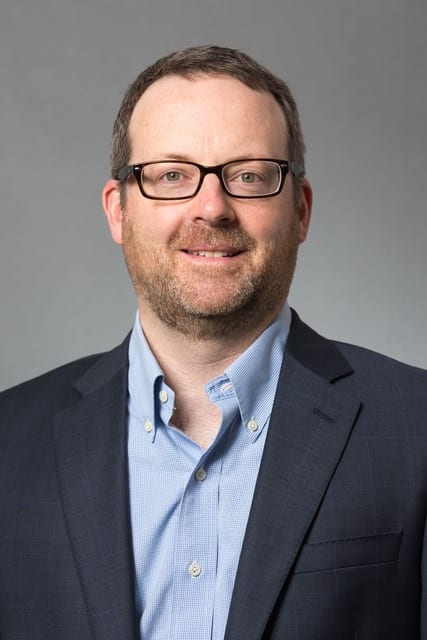
Professor
Cornell University
The research focus of the Coates Group is the development of new synthetic strategies for producing polymers of defined structure. The control of polymer composition, architecture, stereochemistry, and molecular weight allows the indirect control of polymer properties via polymer morphology. Our research projects are interdisciplinary, addressing problems at the interface of organic, inorganic, organometallic, and polymer chemistry.
h-index: 69 Total Articles: 200 Total Citations: 18,919 (Web of Science, Mar. 2019)
h-index: 80 Total Citations: 25,930 (Google Scholar Citations, Mar. 2019)
Monday, April 8, 3:30-4:30pm, WEL 2.122
Assistant Professor
University of California San Diego
h-index: 15 Total Articles: 29 Total Citations: 2493 (Web of Science, Mar. 2019)
Friday, April 5, 3:30-4:30pm, WEL 2.122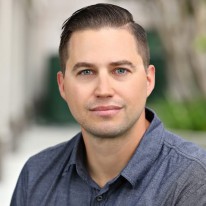
Scientist, Discovery Chemistry
Genentech
PhD 2012 (Krische)
In my current role, I lead a chemistry team tasked with drugging a novel biological pathway. Currently, I have two ongoing collaborations with Princeton University and The University of Texas. These collaborations are solely focused on pushing the limits of synthetic chemistry and developing novel bond formations.
h-index: 10 Total Articles: 13 Total Citations: 596 (Web of Science, Mar. 2019)
h-index: 11 Total Citations: 771 (Google Scholar Citations, Mar. 2019)
Wednesday, April 3, 3:30-4:30pm, WEL 2.122
Associate Professor
University of New South Wales, Sydney
Biomimetic Chemistry: The most complex and elegant examples of "nanotechnology" come from Nature. In our group we first look to Nature for inspiration when it comes to solving the problems we are currently dealing with in nanotechnology (e.g., biosensors or tissue engineering). This is the philosophy of bio-mimetic chemistry, which underpins most of the work in our group.
Overview: At the core of nearly all of our work is the art of synthetic organic chemistry, however, we also apply techniques from across the whole spectrum of chemistry (physical, inorganic, organic, supramolecular and surface chemistry) as well as biochemistry, biophysics and biology. Methods (synthesis and/or self-assembly) to direct the assembly of functional molecules are of particular interest to us as are methods to analyse nanostructures, e.g. by the use of scanning probe microscopy (AFM and STM) and other advanced characterisation tools.
h-index: 28 Total Articles: 107 Total Citations: 5094 (Web of Science, Mar. 2019)
h-index: 30 Total Citations: 6784 (Google Scholar Citations, Mar. 2019)
Friday, March 29, 3:30-4:30pm, Avaya Auditorium, POB 2.302
Professor, Chemical Engineering
University of New South Wales
Our research is centred on the development of environmentally friendly techniques for the synthesis of functional polymeric materials. A major focus is photoinduced electron/energy transfer-reversible addition-fragmentation chain transfer (PET-RAFT) polymerisation where we are continuing to develop novel photoredox catalysts.
We are also developing various polymerisation techniques for visible-light-cotrolled radical polymerisation, such as continous flow PET-RAFT polymerisation and high-throughput synthesis of polymers through photopolymerisation in open-air. Furthermore, we are exploring photopolymerisation in dispersed media for the synthesis of polymeric nanoparticles through polymerisiation-induced self assembly (photo-PISA). Another focus is adapting the aforementioned techniques to the fabrication of advanced polymeric materials for new synthetic antimicrobial macromolecules.
h-index: 61 Total Articles: 206 Total Citations: 10,695 (Web of Science, Mar. 2019)
h-index: 69 Total Citations: 13,998 (Google Scholar Citations, Mar. 2019)
Monday, March 25, 3:30-4:30pm, WEL 2.122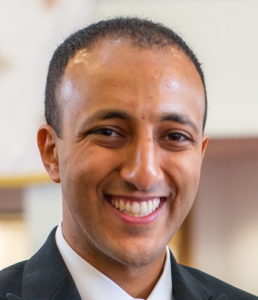
Assistant Professor
Ohio State University
The Nagib Laboratory seeks to bridge the gap between what is possible and practical in the realm of organic synthesis. Our goal is to expand the synthetic toolbox by designing fundamentally new activation strategies and catalysts. We aim to harness the untapped reactivity of cheap and abundant chemical feedstocks as well as enable the late-stage functionalization of complex natural products. We are currently inventing multi-faceted approaches for selective C-H and C-O activation, using combinations of radical (1e-) and closed shell (2e-) processes. By emphasizing the design of novel, dual-catalytic strategies (organometallic, organocatalytic, redox-neutral, etc.) and a careful elucidation of their unique mechanisms, we are developing useful methodologies to enable non-classical synthetic disconnections. Our chemistry has important applications in various interdisciplinary arenas, including the streamlined synthesis of improved medicines, materials, and biofuels.
![]() ORCID: https://orcid.org/0000-0002-2275-6381
ORCID: https://orcid.org/0000-0002-2275-6381
h-index: 7 Total Articles: 12 Total Citations: 1795 (Web of Science, Mar. 2019)
h-index: 7 Total Citations: 2096 (Google Scholar Citations, Mar. 2019)
Friday, March 1, 3:30-4:30pm, WEL 2.122
Associate Professor
Yale University
Despite the power of modern organic chemistry, efficient synthesis of complex molecular scaffolds remains an unmet challenge. Their intricate ring systems and stereochemical arrays require too many synthetic operations to rapidly produce libraries of analogs. New technological approaches are needed to forge their varied bonds to provide scalable access to libraries of these molecular architectures. Through detailed mechanistic study, such technologies can be developed.
The development of general construction reactions will have broad utility in a range of fields that rely on the synthesis of small molecules and functional materials. One particular area that the Newhouse group focuses on is the total chemical synthesis of carbocyclic frameworks that are known to elicit powerful neurological effects. These substances will both serve as chemical probes to study fundamental aspects of neurological function and address neurological dysfunction.
We focus our efforts on the development of new synthetic methods to rapidly acquire these structurally complex small molecules. These substances will be exploited for a variety of purposes by collaborating with neuroscientists.
h-index: 11 Total Articles: 23 Total Citations: 307 (Web of Science, Feb. 2019)
Faculty Recruiting Seminar
Thursday, February 28, 1:00-2:00pm, WEL 2.122
Postdoctoral Fellow
Princeton University
PhD, Rochester, 2016 (Daniel Weix)
Doyle Group research focus: Research in our lab takes place at the interface between the fields of organic synthesis, organometallic catalysis, and physical organic chemistry. We are involved in designing synthetic strategies that enable efficient and selective preparation of complex molecules and biologically privileged structural motifs. To achieve these goals, we harness the activity of inexpensive and abundant transition metal catalysts to achieve novel bond-forming processes. Projects in the group are designed to provide students with expertise in reaction discovery and development, while exposing them to problems in complex target synthesis and mechanistic analysis.
h-index: 6 Total Articles: 7 Total Citations: 323 (Web of Science, Jan. 2019)
Faculty Recruiting Seminar
Tuesday, February 26, 1:00-2:00pm, NHB 1.720
Postdoctoral Fellow
Princeton University
PhD, Rochester, 2016 (Robert Boeckman)
Members of the Hyster group are trained in synthetic chemistry, organometallic chemistry and chemical biology with a strong emphasis on chemical reaction development.
h-index: 5 Total Articles: 9 Total Citations: 79 (Web of Science, Feb. 2019)
Wednesday, February 20, 3:30-4:30pm, WEL 2.122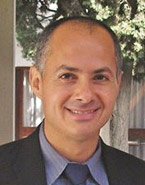
James and Neeltje Tretter Chair
Professor of Chemistry
University of California Berkeley
In the Yaghi group we are building chemical structures by stitching molecules together into large and extended frameworks within which we can store hydrogen, methane, and separate carbon dioxide. The interior of the crystals is capable of compacting gases under ambient conditions thus foregoing the use of high pressures and low temperatures. In this movie, crystals of metal-organic framework-5 (MOF-5, numbered in roughly chronological order of discovery) are made and their structure is precisely designed to have zinc oxide units linked by organic struts (terephthalate) to make a porous network into which voluminous gases can be compacted and transported. This large open space is currently being used for positioning of organic and organometallic catalysts, charge storage for supercapacitors and binding of biological molecules such as proteins and metabolites.
Publications (Google Scholar Citations)
ORCID: https://orcid.org/0000-0002-5611-3325
h-index: 125 Total Articles: 253 Citations: 100,495 (Web of Science, Jan. 2019)
h-index: 140 Total Citations: 135,467 (Google Scholar Citations, Feb. 2019)
Friday, February 15, 3:30-4:30pm, WEL 2.122
Professor and Robert A. Welch Distinguished University Chair in Chemistry
University of Texas San Antonio
Research in the Schanze Labs is focused on the interaction of light with small molecules, polymers, and materials. We have an interest in photochemical and photophysical processes that are stimulated when molecular systems absorb light. Most of our current work centers on studies that explore the phenomenon of luminescence (light emission). In our fundamental work, we apply a variety of spectroscopic methods such as fluorescence spectroscopy and laser-induced time resolved fluorescence spectroscopy to gain information concerning the mechanisms of the light absorption and light emission processes. In applied work, we are using the light emission process of molecules and materials to develop novel light emitting devices (polymer LEDs), and novel fluorescent sensors. Some of our sensor systems are being used by aerodynamics engineers in wind-tunnel and mechanics tests and by chemists and biochemists for sensing analytes of interest.
ORCID: https://orcid.org/0000-0003-3342-4080
h-index: 65 Total Articles: 270 Total Citations: 13,088 (Web of Science, Jan. 2019)
Monday, February 11, 3:30-4:30pm, WEL 2.122
Assistant Professor
Indiana University
Enantioselective cooperative catalysis: In the arena of reaction development, we leverage the power of catalysis to engineer new reactivity. Through a synergistic union of Lewis base and transition metal catalysis, we have developed a platform for the enantioselective α‐functionalization of acyclic esters. This protocol effectively addresses long standing issues with control over enolate geometry of acyclic nucleophiles while simultaneously decoupling enantiocontrol – engendered by the Lewis base catalyst – and reactivity, which can be tailored by tuning the ligand sphere around the metal centre. Targeted Synthesis: We are also interested in applying our cooperative catalysis methodology in the area of targeted synthesis in order to identify efficient routes for the synthesis of a variety of natural product and drug-like molecules of biological interest.
![]() ORCID: https://orcid.org/0000-0003-1119-0332
ORCID: https://orcid.org/0000-0003-1119-0332
h-index: 9 Total Articles: 16 Total Citations: 268 (Web of Science, Jan. 2019)
Friday, February 8, 3:30-5:00pm, WEL 2.122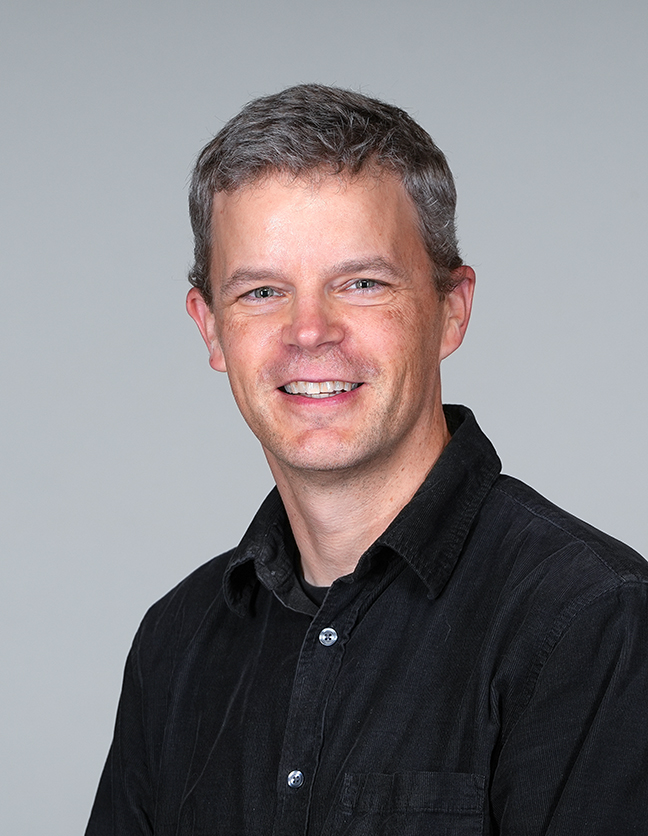
Associate Professor
Hope College
Transition metal catalysis continually revolutionizes the synthesis of complex natural products and potential drug candidates by revealing reaction pathways inaccessible via traditional organic transformations. One area of current interest is the development of methodology for the cleavage and functionalization of carbon-carbon bonds. While carbon-carbon single bonds are inert under a vast majority of standard reaction conditions, certain transition metal complexes promote the activation of these bonds.
ORCID: https://orcid.org/0000-0003-1548-7117
h-index: 12 Total Articles: 18 Total Citations: 757 (Web of Science, Jan. 2019)
Faculty Recruiting Seminar
Monday, February 4, 3:30-4:30pm, WEL 2.122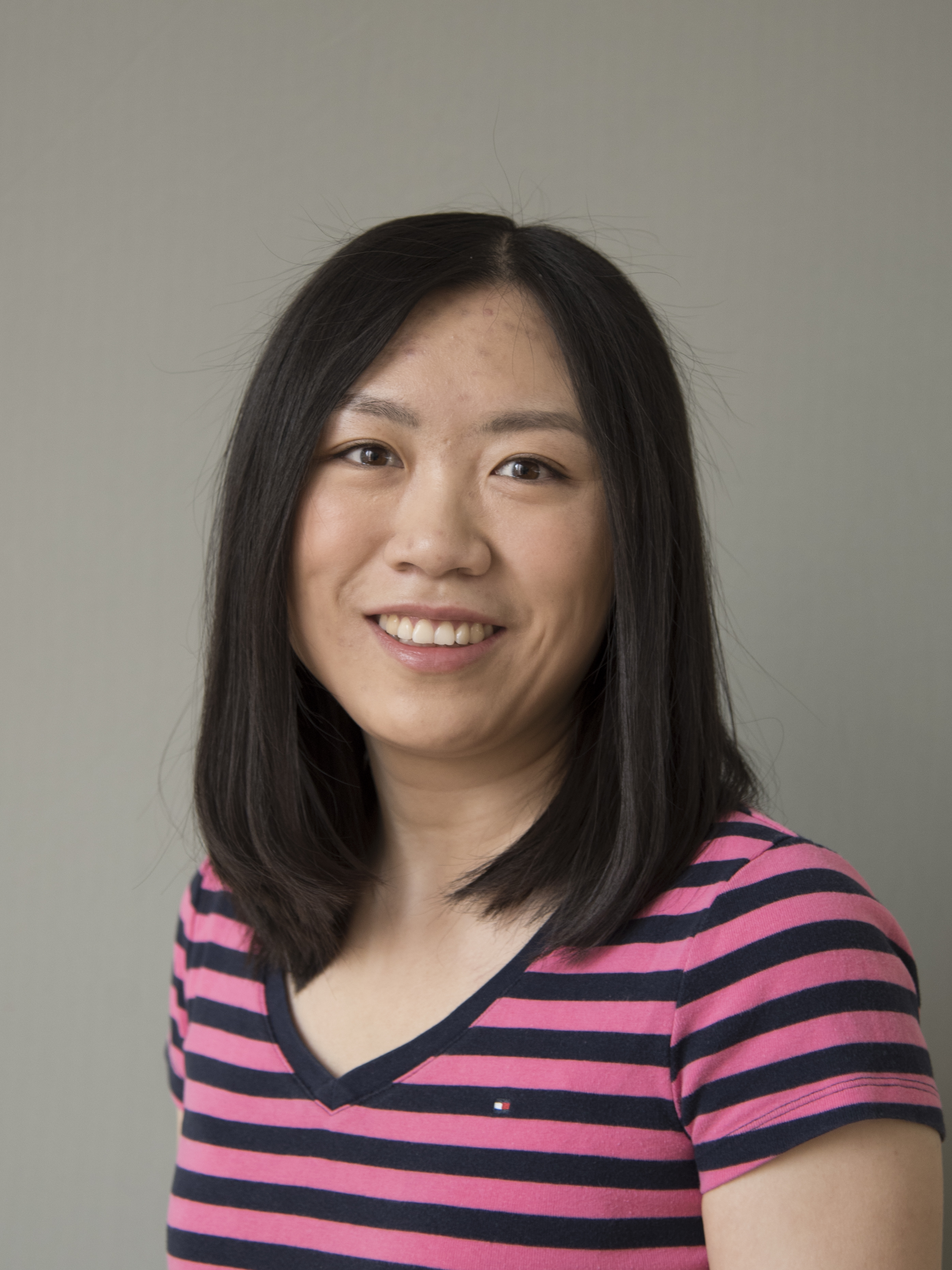
Postdoctoral Fellow
Harvard University
PhD, Illinois, 2015 (W.A. van der Donk)
Liu Group research focus: DNA-Templated Synthesis & DNA-Encoded Libraries: Bioactive synthetic small molecules and synthetic polymers using DNA-templated organic synthesis, a technique pioneered by the Liu group, and Darwinian selection. Protein evolution and delivery: The laboratory evolution and in vivo delivery of proteins with therapeutic or biotechnological potential. Genome editing: The development and application of genome-editing proteins to study biology and to treat genetic diseases.
h-index: 12 Total Citations: 686 (Google Scholar Citations, Jan. 2019)
Monday, January 28, 3:30-4:30pm, WEL 2.122
Assistant Professor
Duke University
The Hargrove lab harnesses the unique properties of small organic molecules to study the structure, function and therapeutic potential of long noncoding RNAs (lncRNAs). The discovery of these fascinating biomolecules has caused a paradigm shift in molecular biology and speculation as to their role as the master drivers of diseases such as cancer. At the same time very little is known about their structure and function, leading some to call the field a veritable “Wild West.” Small molecules are the perfect tools for such exploration, and the Hargrove lab works at the interface of chemistry and biology, employing methods ranging from RNA-targeted small molecule synthesis and array-based pattern recognition to studies of the molecular and cellular biology of nucleic acids. Collaborations with the Department of Biology as well as colleagues in the School of Medicine ensure that these tools are applied to the most important unsolved problems in the fundamental biology and disease-related actions of long noncoding RNAs.
ORCID: https://orcid.org/0000-0003-1536-6753
h-index: 12 Total Articles: 21 Total Citations: 703 (Web of Science, Jan. 2019)
Faculty Recruiting Seminar
Monday, January 14, 3:30-4:30pm, Avaya Auditorium, POB 2.302
Postdoctoral Researcher
University of California Berkeley
Research in the Toste group is primarily aimed toward the development of catalysts, catalytic reactions and methods for organic synthesis. Ultimately, we are interested in using these methods to address problems in the synthesis of complex molecules possessing interesting structural, biological and physical properties. As such, our research program spans the areas of organic synthesis, catalysis, and organometallic chemistry.
Not available
The Seminars page is brought to you by the University Libraries. Our intent is to provide a quick profile of our guest speakers, links to their research group sites, recent publications, author metrics, and other information to enhance your engagement with the guests.

This work is licensed under a Creative Commons Attribution-NonCommercial 4.0 Generic License.